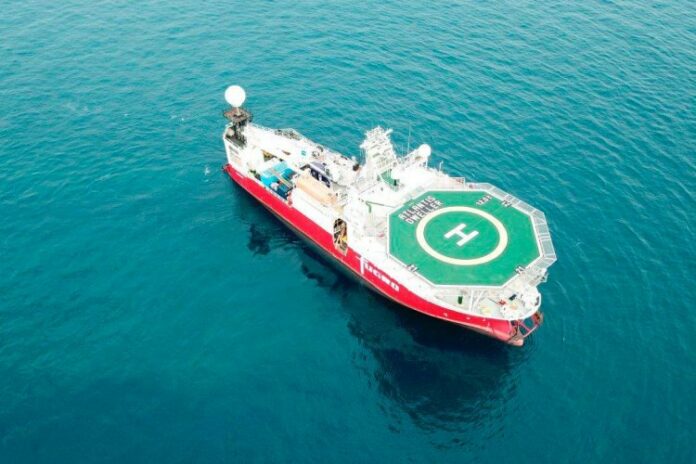Fugro has completed fieldwork on a hydrographic survey project for the US National Oceanic and Atmospheric Administration (NOAA) to update nautical charts off the northern coast of Unimak Island, Alaska. Located in the Bering Sea, the island supports multiple fisheries, a major transit route, and at sea cargo transfers.
Existing charts in the region do not meet current navigational needs, with data in some cases predating the 1940s. Fugro is helping NOAA address these data deficiencies with new, high resolution bathymetry over five sites totalling approximately 1700 km2. These Geo-data will be used to produce new nautical charts, making marine navigation safer and more efficient.
The new bathymetry was acquired from two multibeam-echosounder-equipped survey vessels, one focused on nearshore waters, the other on deeper waters located farther offshore. To plan the more challenging nearshore surveys, Fugro employed its SatRecon® service, which combines satellite imagery and proprietary processing techniques for the identification of potential unmapped hazards such as shipwrecks and rock outcrops. In addition to improving the safety of crew, equipment and the environment, identifying these hazards also increased Geo-data acquisition efficiency, allowing crews to survey the nearshore waters at a faster rate than would have otherwise been possible.
Mark MacDonald, Hydrography Director for Fugro in the Americas, said:
“It was great to work for NOAA in Alaska this summer, and we are really happy with the way our SatRecon service helped progress the nearshore survey operations. Since the mid-1970s, Fugro has been successfully mapping the seafloor in the state, including many years of nautical charting updates for NOAA, starting in 1998. We understand the operational challenges associated with working in remote parts of Alaska, and were pleased to apply innovative solutions on this project, unlocking insights from Geo data for a safer and more sustainable ocean economy.”



